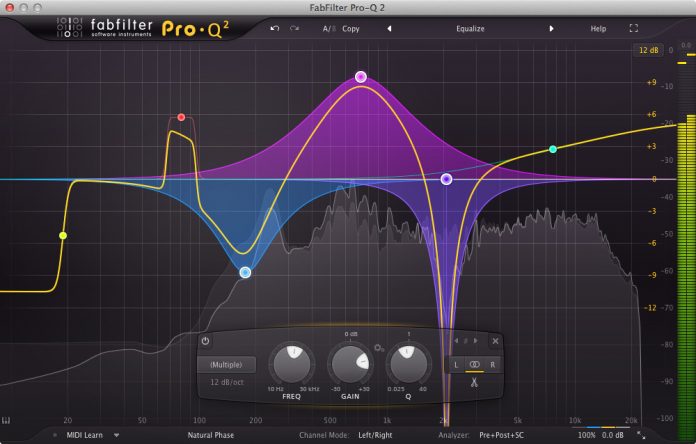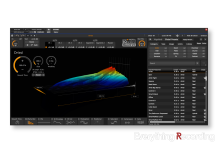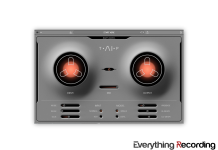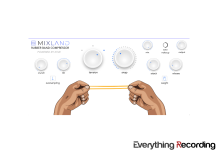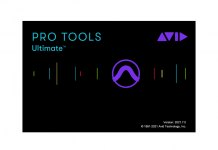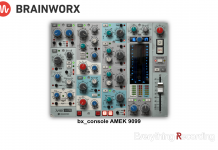FabFilter Pro-Q needs no introduction. When people with the reputation that Tony Maserati and F. Reid Shippen have use this plugin regularly, you know you’ve done something right. There’s no real reason to do a typical review of this plugin so lets take a look at the new features and see whether they are useful or just fluff. I mean, could an EQ that is already great in its own right justify trying to get your money a second time?
FabFilter is not your normal EQ plugin to begin with. Although this plugin comes in all of the standard flavors of AAX32/64, AU, VST/3, RTAS, and Audiosuite, Pro-Q 2 comes in a surprisingly small install file like every FabFilter plugin. It’s really crazy how such a powerful plugin comes in a 9MB package. You still get the same option to select up to 24 separate bands for editing, color coded frequencies, and stacked pre / post analyzer you’ve always had. You also still have all of the features in Pro-Q 2 that 1 had but if you’re stuck in your ways and still want to use Pro-Q1, you can still run the older version alongside version 2 while you adjust.
On the surface, it may look like not much has changed with Pro-Q, but lurking beneath its colorful exterior is a whole new beast. The processing engine has been completely overhauled to give you more power with half the DSP. You still get Linear Phase mode but it’s been improved in sound quality and latency too. You also have the option to use the plugin in multiple sizes, including full screen mode for those tight adjustments. Borrowing from Pro-MB, the new interface for frequency adjustments is floating and follows the frequency that you’re tweaking. This takes up less space and allows more space for the analyzer to shine.
This isn’t your standard every day analyzer either. This is one of the most interactive ones you will come across giving you both pre and post monitoring as well as the ability to zoom in really tight on frequencies. If that’s not enough, you have the option of actually grabbing the frequency you see that’s causing the ruckus and pull it down. Spectrum grab simply highlights the audio in the analyzer purple and lets you click and drag to pull down the problem area. The analyzer comes with an new Tilt function that works to show how the human ear perceives the frequency response.
Are you one of those highly technical engineers with a wasted degree in music theory? You’re in luck because now Pro-Q 2 has an optional piano roll to accompany the analyzer and allows you to quantize your EQ to specific notes. You can double click on the EQ band you’ve created and type in C#3 and the band will snap to the correct frequency. Now you can EQ musically.
Speaking of musical EQs, this one can work very similar to your favorite hardware with Gain Q interaction and Natural Phase mode. With these two modes, you have the option to closely match the same phase response and EQ curve interaction of your favorite consoles. The Gain Q interaction cog in between the Gain and the Q knobs works as a link between the two and provide a similar response ratio to analog EQ. As the gain goes higher, the Q narrows out and vice versa. Pro-Q 2 also allows slope interaction between all of the filters. Now those new EQ shapes in version 2 can have slopes all the way up to 96DB per Octave. A surprising feature Pro-Q didn’t originally have is phase invert, which is now in the Pro-Q 2. Now no more need to open up another plugin to flip the phase.
Complete control is the common theme of the new Pro-Q with even more features at your fingertips like Gain Scale, Auto Gain, and the intriguing EQ Match. Gain scale works as a quasi mix knob that controls how much the gain affects the whole track. You can use this to automate your EQs according to just how much influence needed in certain parts… or if you’re really creative, add movement to a track. Auto gain compensates for what you’ve added or taken out while EQing your track. Auto gain is not an exact science but works perfect to fill out your signal by either giving or taking away volume to balance out your content. One of the centerpieces of this plugin is the new EQ Match feature, which can analyze audio from another track via side chain, and match the frequency curve to your current channel. This is definitely a unique feature and would allow for instant replication of overall EQ for a master bus or just an acoustic guitar tone you like. Mastering for a cohesive tone of an album is at your reach within minutes.
That’s a pretty big list of upgrades, many of them being very unique to Pro-Q 2. Let’s tally this up and see if this plugin warrants the upgrade or new purchase. How often do you get a completely resizable plugin with as much visual control as you do with Pro-Q 2? How many plugins allow you to simply grab the analyzer to tame frequencies? Ok, how many plugins can bring in external audio and match the EQ curve for you? I’d say there are little to no other pieces of software that can do any of those. Add in the extremely smooth workflow, versatility of use, and all tools staying in one window and I’d say you have the king of EQs.
I like the subtle things FabFilter throws in, like double clicking to enter “1.5k” to snap to a frequency. I also appreciate that they made their knobs inertially responsive i.e.: the slower you turn them, the more precise your movements are. I even like the piano roll even though part of me would like to be able to press the keys and either a sine wave or white noise would play back to help pinpoint a frequency better. The midi learn is also some of the easiest I’ve ever used.
In summation, I’d say this upgrade purchase is completely justified. I’d say FabFilter easily is the “King of EQs.” Now stop fumbling around with other EQs and just go and get a trial of FabFilter Pro-Q 2. You’ll see exactly what I’m talking about.



